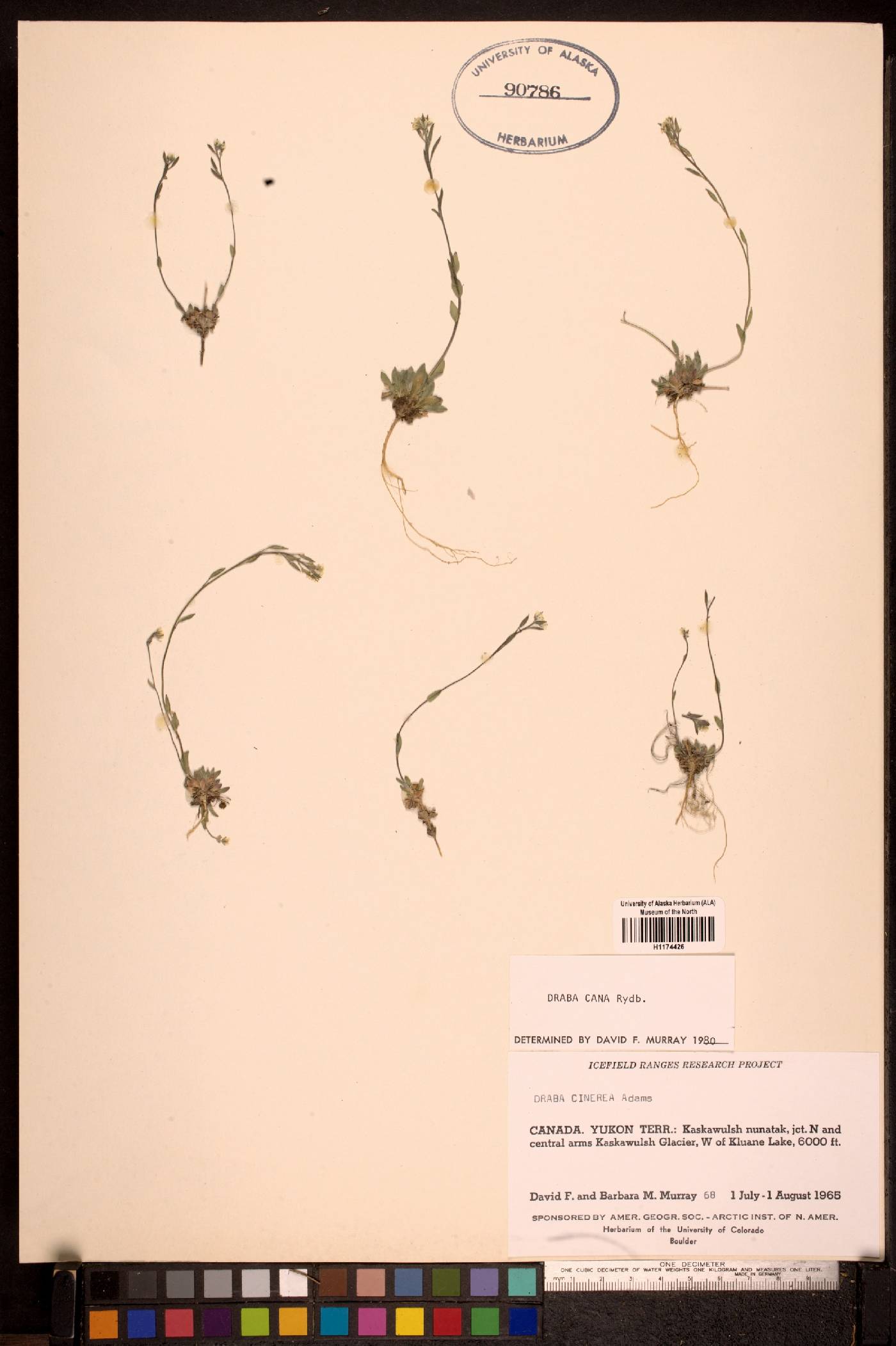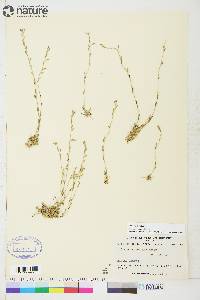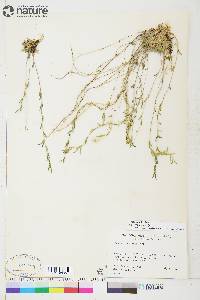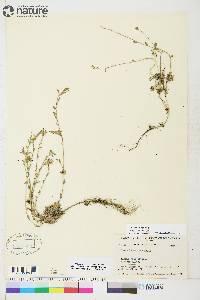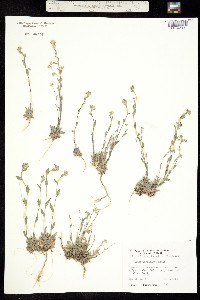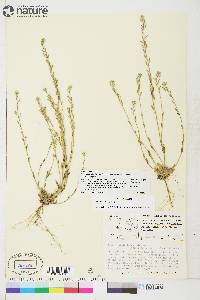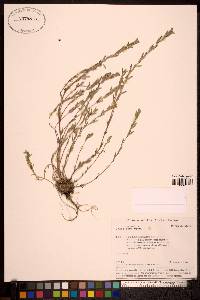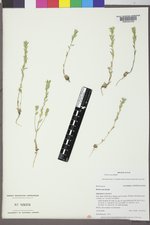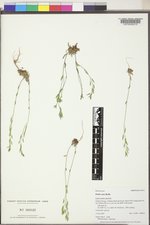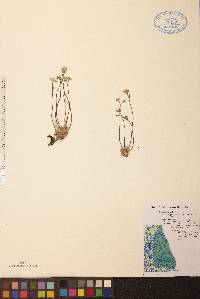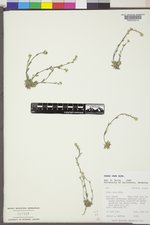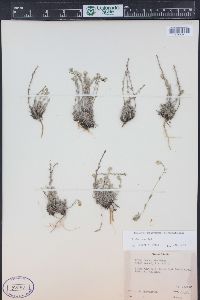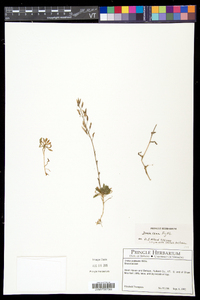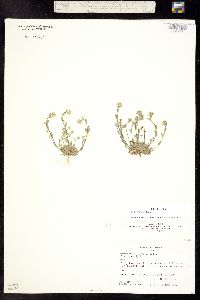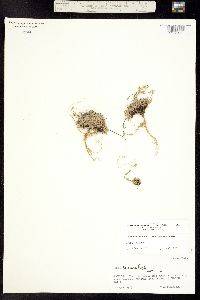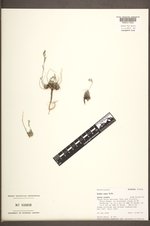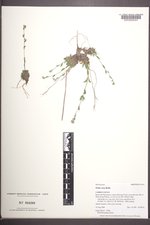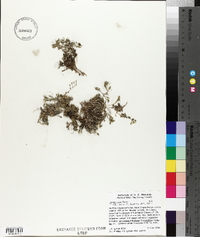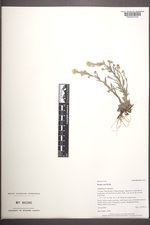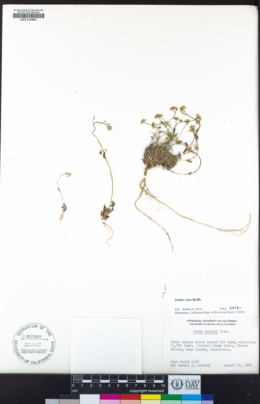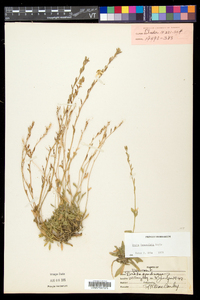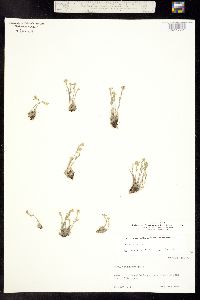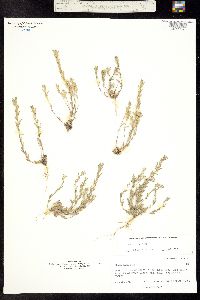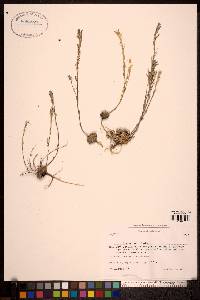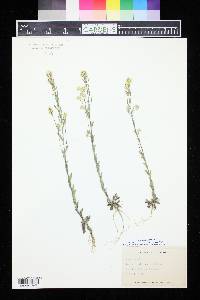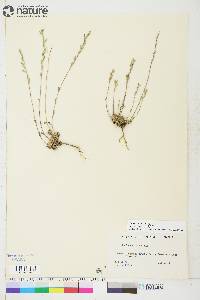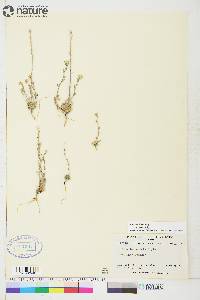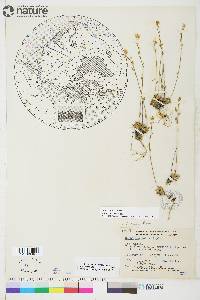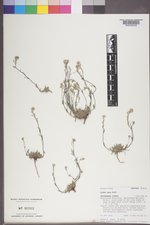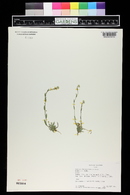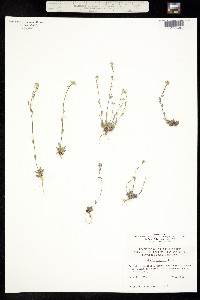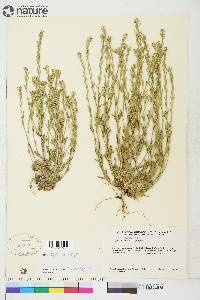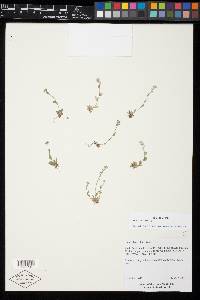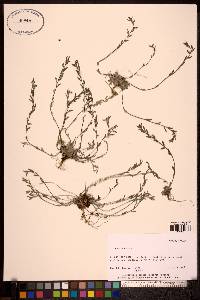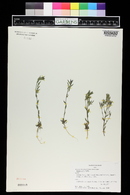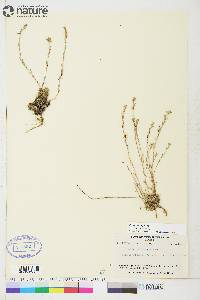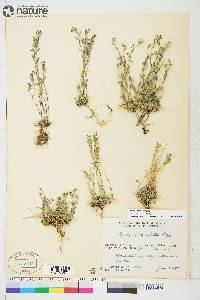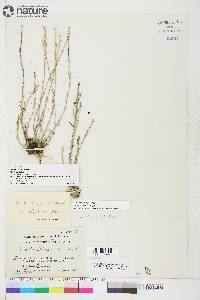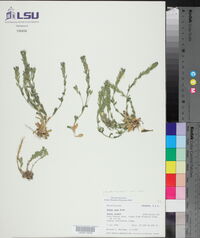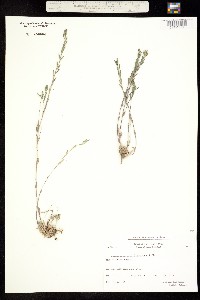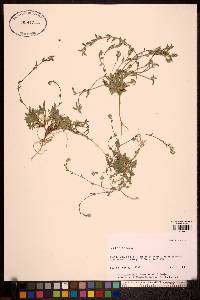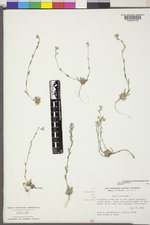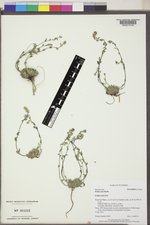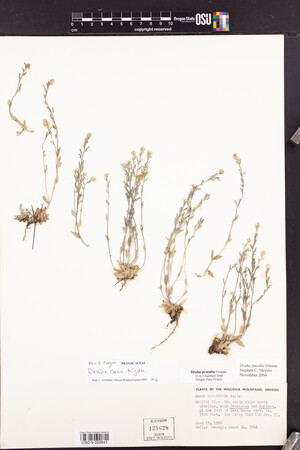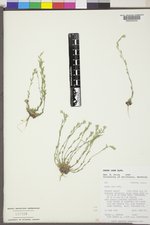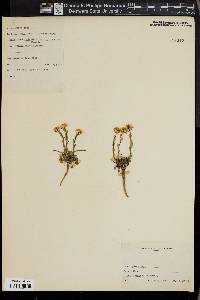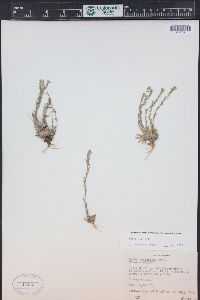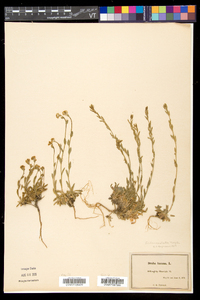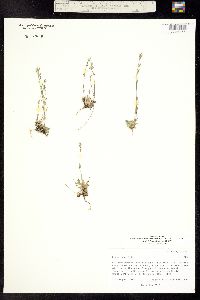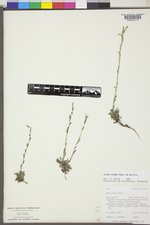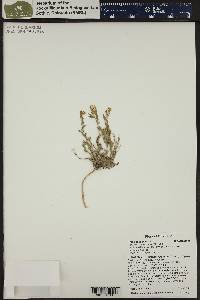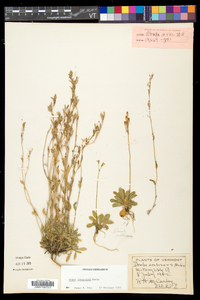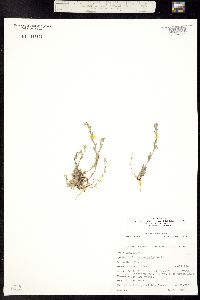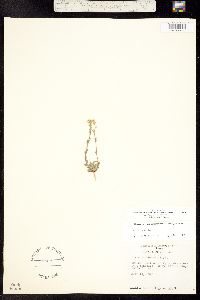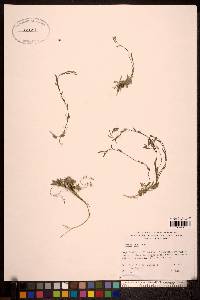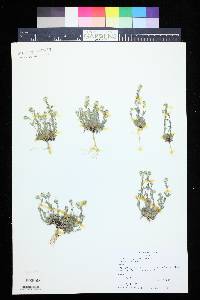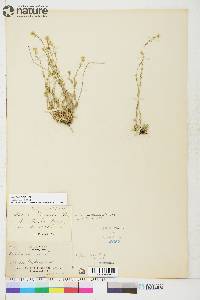
|
|
|
|
Family: Brassicaceae
Hoary Whitlow-Grass
[Draba breweri var. cana (Rydb.) Rollins] |
Perennials; caudex simple or branched (branches short); not scapose. Stems unbranched or branched distally, (0.6-)1-3 (-3.8) dm, pubescent through-out, trichomes simple, 0.5-1 mm, with 4-10-rayed ones, 0.05-0.2 mm (mostly branched on basal parts). Basal leaves rosulate; petiolate; petiole ciliate throughout; blade linear to oblanceolate or oblong, (0.5-)0.8-2(-3.5) cm × 1.5-4(-11) mm, margins entire or dentate, (base and apex ciliate, trichomes simple, 0.3-0.8 mm), surfaces pubescent with short-stalked, 4-12-rayed trichomes, 0.1-0.3 mm. Cauline leaves 3-10(-17), (not overlapping); sessile; blade lanceolate to ovate or oblong, margins entire or dentate, surfaces pubescent as basal (adaxially with simple and forked trichomes near blade base). Racemes (10-)15-47 (-63)-flowered, basally bracteate, often considerably elongated in fruit; rachis not flexuous, densely pubescent, trichomes 4-10-rayed (0.05-0.2 mm), and fewer simple ones. Fruiting pedicels suberect or ascending, straight, 2-5(-10) mm, pubescent as rachis. Flowers: sepals (green or lavender), oblong to ovate, 1.5-2 mm, pubescent, (trichomes simple and few-rayed); petals white, oblanceolate to spatulate, 2.3-3.7(-4.5) × 0.7-1.7 mm; anthers ovate, 0.1-0.2 mm. Fruits (subappressed to rachis), linear -lanceolate to linear or, rarely, ovate-oblong, slightly twisted or plane, flattened, (5-) 6-11 × 1.5-2(-2.5) mm; valves pubescent, trichomes short-stalked, 3-7-rayed, 0.05-0.3 mm; ovules 28-48 per ovary; style 0.1-0.6 mm. Seeds ovoid, 0.5-0.7(-0.9) × 0.3-0.5 mm. 2n = 32. Flowering (May-)Jun-Aug. Rock outcrops and talus, open prairie benchlands, roadsides, meadows, alpine tundra; 0-4100 m; Greenland; Alta., B.C., Man., N.B., Nfld. and Labr. (Nfld.), N.W.T., Ont., Que., Sask., Yukon; Alaska, Calif., Colo., Idaho, Maine, Mich., Mont., Nev., N.H., N.Mex., S.Dak., Utah, Vt., Wash., Wis., Wyo. The limits of Draba cana have long been confused, and the species was treated as a synonym of the Himalayan D. lanceolata Royle (M. L. Fernald 1934; C. L. Hitchcock 1941) or as a variety of the western North American D. breweri (R. C. Rollins 1993). However, G. A. Mulligan (1971) clearly demonstrated that all three are distinct and should be maintained. Some Utah plants corresponding to the type of D. valida have shorter and wider oblong-ovate fruits. In all other aspects, they are indistinguishable from D. cana. Additional studies are needed to establish whether such plants should be formally recognized.
Perennial with dense basal rosettes, the numerous lvs oblanceolate or spatulate, densely stellate-hairy, commonly less than 3 cm; cauline lvs (3-)5-8(-12), lanceolate to ovate, 5-20 mm; stems 1-3 dm; raceme elongating, the lower fls remote, axillary, only the upper crowded; pet white, 4 mm; frs closely ascending on short pedicels, oblong to lance-oblong, broader at the base than at the tip, often twisted, 5-12 נ1.5-2 mm, stellate-hairy; persistent style 0.2-0.5 mm; 2n=32. Rocky ledges and gravelly or rocky soil; Siberia and boreal Amer., s. in our range to N.B., the mts. of n. N. Engl., n. Mich., and e. Wis. May-July. (D. lanceolata and D. stylaris, both misapplied) Gleason, Henry A. & Cronquist, Arthur J. 1991. Manual of vascular plants of northeastern United States and adjacent Canada. lxxv + 910 pp. ©The New York Botanical Garden. All rights reserved. Used by permission. |
This project was made possible in part by the Institute of Museum and Library Services [MG-70-19-0057-19].
Powered by Symbiota

